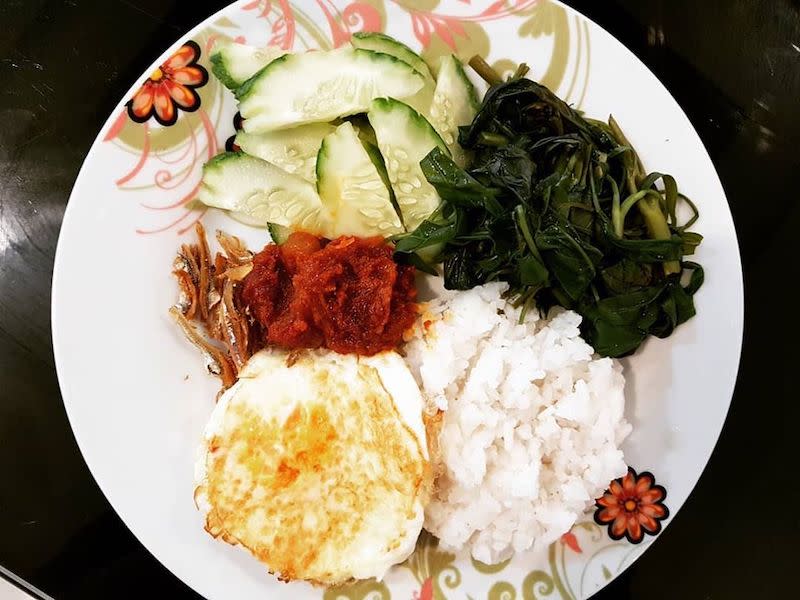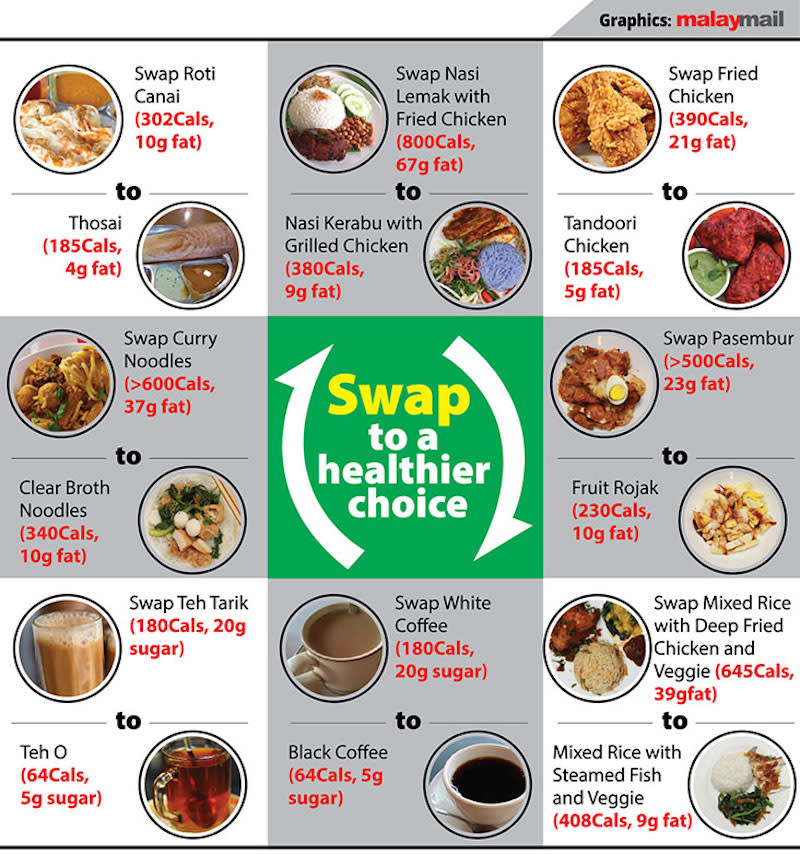Forget quinoa and kale, here are some simple steps for a healthy ‘Malaysian’ diet

KUALA LUMPUR, Jan 29 — There is a tonne of information for the taking when it comes to healthy eating and diets.
And some of the recommended diets can be expensive, curtailing (depending on one’s pre-existing eating habits) or a chore to prepare.
With Malaysians and their love for food, is it really possible to have a diet that is healthy, cheap and easy to maintain?
Malaysian Dietitian Association president Winnie Chee said Malaysians were currently facing a rise in diseases such as diabetes, heart disease, high blood pressure, kidney failure and cancers.
All of which can be prevented with diet and a healthy lifestyle.
Chee added that when it comes to diet, a healthy one depended on the food portions itself.
“Actually the rules to a healthy diet and lifestyle are eating in moderation and smaller portions. Eat more fruits, vegetables and wholegrains. Eat less fat, salt and sugars and balance food intake with exercise,” she said.
A balanced diet is seemingly what Malaysians don’t seem to have with an AIA Malaysia Healthiest Workplace 2018 Survey showing about 91.7 per cent of employees do not practise it.
Malaysia also ranked number one for the country with the most overweight population in South East Asia as reported by the World Health Organisation (WHO) non-communicable diseases country profile in 2011.
The Health Ministry’s Healthy Plate Model recommends a diet of “quarter-quarter and half portion”.
This is a quarter for cereals like rice, another quarter for proteins like fish, chicken or seafood and the other half filled with fruits and vegetables.
“Imagine your plate divided into two quarters and one half, and this is how much proteins, cereals, fruits and vegetables you should be having with every meal,” said Chee.
“This is also an affordable way because most Malaysians eat mixed rice dishes (nasi campur) — and by choosing more vegetables instead of meat dishes, the meal is more affordable.”

University Malaya Specialist Centre dietetic services head Rozanna M Rosly said in order to have a cost-effective diet, Malaysians should opt for local vegetables and meats instead of imported ones.
“They are fresher and cheaper yet just as nutritious,” she added.
“For instance, swap kale for spinach, avocado for bananas and raspberries for strawberries.”
“Also opt for locally-sourced meat and fish from the wet market instead of supermarket as these will stay fresh longer and cost less.”
She also said “food swaps” such as those suggested by YouTube wellness and fitness personality Joanna Soh could be used.

Rozanna added that it was important to view healthy eating and a balanced diet as a lifestyle as it can be considered as an investment for one’s future.
“I think we need to keep on motivating ourselves for the future. It is like our savings; we need to put the effort to see the long-term benefits,” she said.
“If we fail or have difficulties, we keep trying and continue.”
“Take baby steps such as ordering no sugar in beverages or bringing your own water bottles for meals, eating more ‘ulam’ or your own sliced cucumber for your lunch out. Bring fresh fruits or dates for snacks will be baby steps towards a healthier you.”
Related Articles China virus outbreak pressures already weakened economy Saudi Arabia says watching oil market closely regarding China virus Study: 9 out of 10 parents feel their teens spend too much time playing video games



